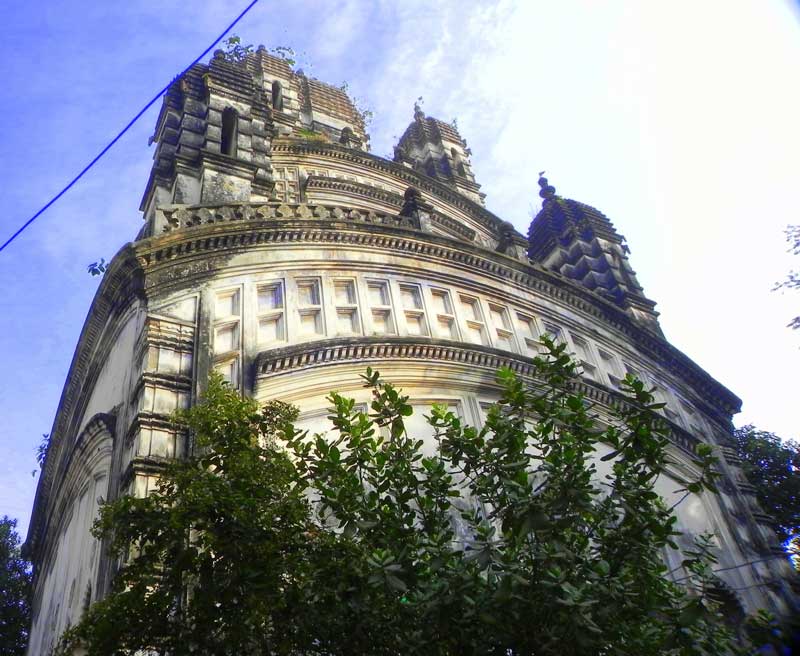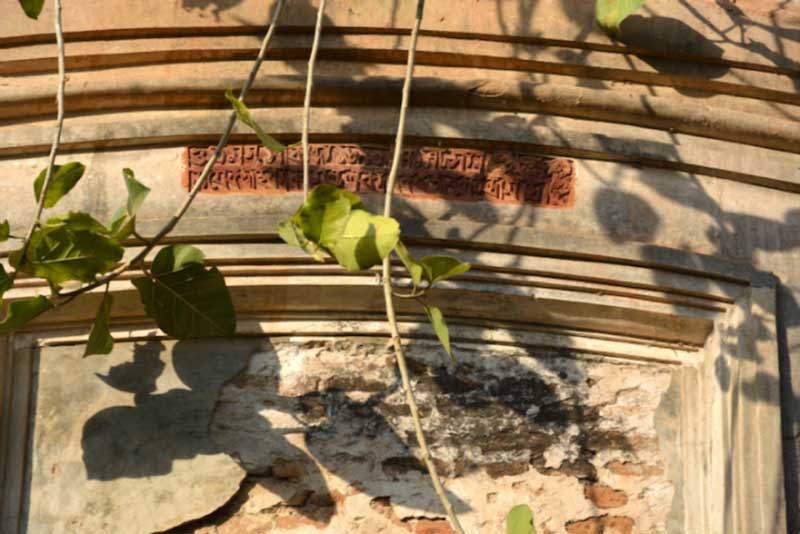
The City of Calcutta was once part of the kingdom of a great forest, known as the Sundarbans, and Bawali is located just ten minutes away from Budge Budge in Calcutta, probably named after its first settlers, the honey-collectors and woodcutters, residing in the area around 500 years ago. Sometimes during the early 17th-century, Basudeb Roy, a prominent official at the court of Mughal Emperor Akbar, was bestowed the Zamindari of Bawali and shifted there from the Basantapur area in Nadia district. As his grandson Shobharam was awarded the title of Mondal, the family came to be known as the Mondal family of Bawali. Rajaram, the grandson of Shobharam, used to serve the King of Hijli as a commander of his force, and appreciating his bravery, the king gifted him 50 villages in the region, including Budge Budge, marking the beginning of their dominance in the area roughly around 1710.

It is estimated that the Mondal family of Bawali constructed their palatial building in the area around the 18th-century, and the family flourished under Haradhan Mondal, the grandson of Rajaram and son of Dasarathram, who enjoyed the patronage of the East India Company.
With the trade partnership with the British, along with effective land reforms, Mondals of Bawali under Haradhan Mondal soon became reckoned among the influential Landlord of Bengal. Haradhan Mondal was said to be a compassionate and religious person, who built several temples in his area, and following his steps, his seven sons turned the otherwise nondescriptive village into a temple town.

Sometimes during the 18th-century, in response to the invitation of Robert Clive to settle in Calcutta, Ramnath Mondal and Manick Mondal settled along the banks of the Adi Ganga, also known as The Tolly Nala, in the present-day Chetla-Tollygunge area.
Maintaining the family tradition, both of them constructed several temples, even some temple complexes in the vicinity of the Adi Ganga, which included the spectacular Radhanath Temple, constructed by Ramnath Mondal, the eldest son of Haradhan Mondal.
Located in an extremely congested area, the Radhanath Temple was constructed in traditional Bengali Nabaratna style with hand-made bricks, and the marbles brought from Rajasthan. The Bengali word nabaratna stands for nine jewels, referring to the nine pinnacles or spires of the tall temple, measuring 90 feet from the base of the central spire. Construction of the temple started in 1796, and it took more than 12 years to be completed in 1809. It is said to be opened on the auspicious day of Poush Sankranti, the last day of the ninth month of the Bengali calendar.

The two-storey temple, richly decorated with floral motifs, has five doors on each side of the ground floor, while the upper floor has three doors.
Dedicated to Radhanath alias Lord Krishna, the temple houses the idols of Radhanath or Radhakanta, Radha, Laksmi Narayan, and several other deities. The principal idol of Radhanath is carved of black stone, locally known as Kashthipathor, and those of Radha and Laskhmi Narayan are made of Ashtadhatu, an alloy of eight metals. There is a plaque in black stone at the base of the eastern wall of the temple indicating the details of the temple construction, written in ancient Bengali script.

There was a Rashmancha close to the temple, which collapsed almost a decade ago. During the Rash Festival, the deities of Radhanath and Radharani were installed and worshipped there. Apart from the towering Radhanath Nabaratna Temple, the temple complex also has a traditional Nat Mandir, although its original flat roof collapsed long back and was replaced by a concrete roof in 1961.

The descendants of the Mondal family of Bawali sincerely try to maintain the structure of the beautiful temple with their limited funds, and a major repairing project was undertaken in 2013, when all the deep-rooted unwanted vegetative growth was removed, and the structure was cleaned. Unfortunately, due to lack of regular maintenance, new wild vegetation immediately started to replace the old, penetrating their roots deep into the structure within a year.

Unfortunately, it is difficult to spot the Bawali Radhanath temple without the help of the locals due to its location in a jammed and crammed area on Mondal Temple Lane, beside Chetla Road. After crossing the bridge over the Tolly Nalah and a few steps along the Chetla Road, the temple becomes visible on the left, with its pinnacles towering over the surrounding rooftops.